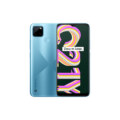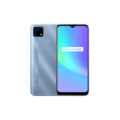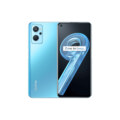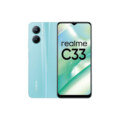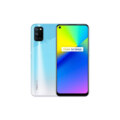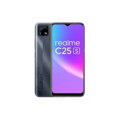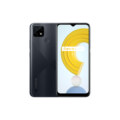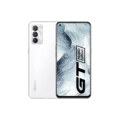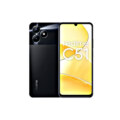Realme 8
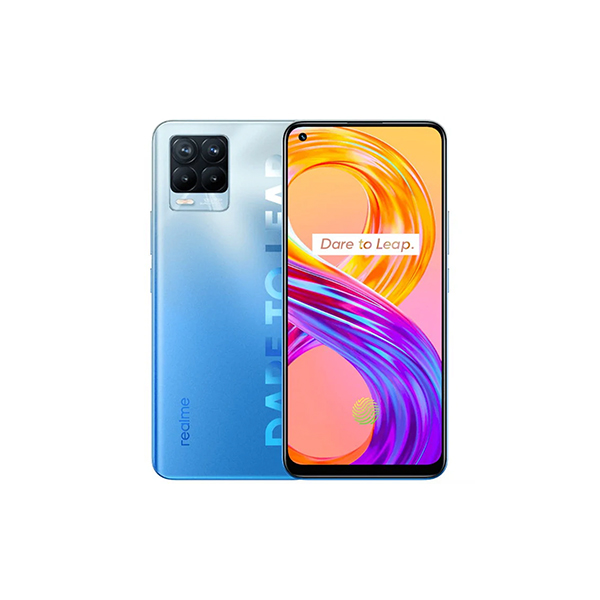

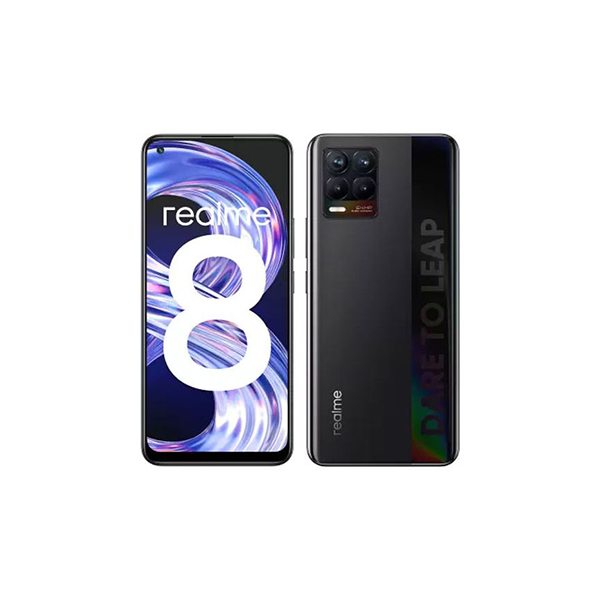
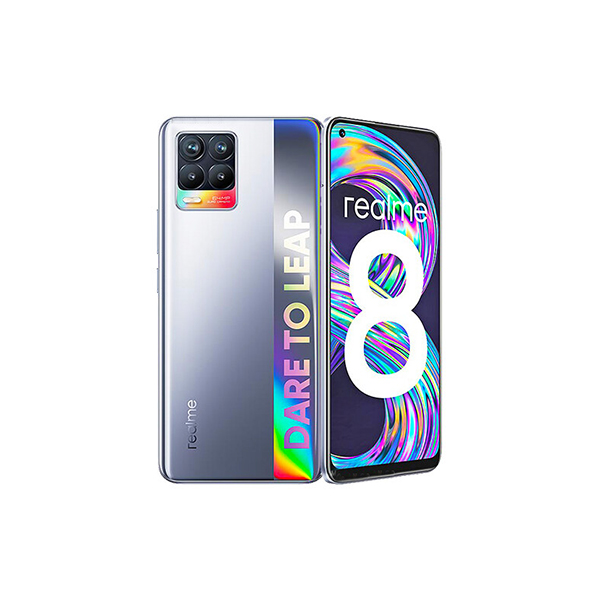
Specs
General
| Device Type | Realme Phone |
| Announced | 24 March, 2021 |
| Released | 25 March, 2021 |
| Status | Available |
Design
| Dimensions | 160.6 x 73.9 x 8 mm |
| Weight | 177 g |
| Protection | Glass front, plastic frame, plastic back |
| Colors | Cyber Silver, Cyber Black |
Display
| Refresh Rate | 60 Hz |
| Display Type Display Technology => A number of display technologies and types used in mobile phones => TFT (Thin Film Transistor), IPS (In-Place Switching), OLED (Organic Light Emitting Diode), AMOLED (Active-Matrix Organic Light-Emitting Diode), Super AMOLED (an even advanced version of AMOLED), Resistive Touchscreen (Resistive touchscreens contain two layer of conductive material with a very small gap between them which acts as a resistance), Capacitive Touchsceen (Capacitive touchscreen technology consists of a layer of glass coated with a transparent conductor) | Super AMOLED |
| Size | 6.4 inches |
| Resolution | 1080 x 2400 pixels |
| Display Colors Display Colors is refers to the number of different shades of colors that the screen is capable of displaying => 64K colors, 256K colors and 16 million colors, Obviously 16M is highest available range of colors and better than others. | 16M Colors |
| Pixel Density Pixel Density (PPI) is refers to the concentration of pixels on a particular display, measured in pixels per inch (ppi). Pixel density is calculated by dividing the diagonal pixel resolution of a display by its diagonal size, higher pixel density better display quality. | ~ 411 ppi |
| Touch Screen | Capacitive Touchscreen, Multitouch |
| Features | HDR10, 1000 nits (peak) |
| Secondary Display | No |
Camera
| Front Camera | 16 MP, f/2.5, (wide) |
| Camera Setup | Quad |
| Main Camera Camera is able to capture photographs and usually videos, The most important characteristics of a camera are the resolution (measured in megapixels), lens focus type (fixed or automatic), higher megapixel cameras are known to capture higher quality photos, but not always a good measurement of the photos quality. |
64 MP, f/1.8, 26mm (wide) 8 MP, f/2.3, 119˚, 16mm (ultrawide) 2 MP, f/2.4, (macro) 2 MP, f/2.4, (depth) |
| Video | 4K@30fps, 1080p@30/60/120fps, gyro-EIS |
| Camera Features | Geo-tagging, Phase detection, HDR, Panorama |
| Flash Flash Light => There is commonly two types of flash lights are used in camera mobile phones, LED Flash (LED flash offers lower power consumption with drive circuitry that takes up very little room, LEDs can be strobed faster than any other light source), Xenon Flash (xenon flash produces an extremely intense full-spectrum white light for a very short duration) | LED flash |
Hardware
| Operating System OS => Every computer system run on a base software called Operating System (OS). Operating System controls all basic operations of the computer (such as smartphone, PDAs, tablet computers and other handheld devices). The Operating System allows the user to install and run third party applications (apps), apps are used to add new functionality to the device. | Android 11 |
| Chipset Chipset is a group of integrated circuits designed to perform one or a more dedicated functions, often with real time computing constraints, Popular smartphones are equipped with more advanced embedded chipsets that can do many different tasks depending on their programming. | Mediatek MT6785V/CD Helio G95 |
| CPU CPU (Central Processing Unit) mostly known as processors, CPU processes instructions in order to carry out certain functions that make your device operate properly. Processors are often described as the brain of computers, smartphones and tablets, Smartphones and tablets rely on processors to carry out their every task, Processors are an incredibly important factor in selecting any type of computing device, including your smartphone. | Octa-core (2x2.05 GHz Cortex-A76 & 6x2.0 GHz Cortex-A55) |
| Architecture | 64 bit |
| Fabrication | 12 nm |
| GPU GPU (Graphics Processing Unit) is a single-chip processor designed to rapidly manipulate and alter memory to accelerate the creation of images in a frame buffer intended for output to a display, This includes things such as lighting effects, object transformations, and 3D motion. | Mali-G52 MC2 |
| RAM (Memory) RAM (Random Access Memory) is a type of computer memory that can be accessed randomly, any byte of memory can be accessed without touching the preceding bytes that allows information to be stored and accessed quickly from random locations. RAM is the most common type of memory found in computer systems, smartphones, tablets and other electronic devices. | 4 GB |
| Internal Storage Internal Storage is a data storage space (flash memory) mostly used in smartphones, tablets and other electronic devices where operating system, apps, music, photos, videos, files and other user data Is stored. | Mali-G76 MC4 |
| Card Slot Memory Card Slot is a special slot for inserting a memory card. Memory cards allow you to expand the phone's built-in memory, A memory card (sometimes called a flash memory card or a storage card) is a small storage medium used to store data such as text, pictures, audio, and video, for use on small, portable or remote computing devices such as mobile phones, mp3 players, digital cameras. | |
| Sensors Sensors are electronic components that detects and responds to some type of input from the physical environment. The specific input could be light, heat, motion, moisture, pressure and location, The output is generally a signal that is converted to use in computing systems, a location sensor, such as a GPS receiver is able to detect current location of your electronic device. | Accelerometer, Compass, Fingerprint (under display, optical), Gyro, Proximity |
Network
| SIM TYPE SIM (Subscriber Identity Module) is a small card that contains mobile network subscriber's account information. This allows the phone using the card to attach to a mobile network. The SIM card is most commonly associated with GSM and UMTS mobile networks. Moving a SIM card from one phone to another allows a subscriber to switch mobile phones without having to contact their mobile network carrier. SIM cards can also be used by a phone to store limited amounts of data, such as phone numbers and text messages. | Nano SIM |
| SIM Technology | Dual Sim, Dual Standby (Nano-SIM) |
| 2G Network | GSM 850 / 900 / 1800 / 1900 |
| 3G Network | HSDPA 850 / 900 / 1700(AWS) / 1900 / 2100 |
| 4G Network | LTE band 1(2100), 3(1800), 5(850), 8(900), 38(2600), 40(2300), 41(2500) |
Multimedia
| FM Radio | |
| Stereo Speakers | NO |
| Loudspeaker | YES |
| Audio Jack | 3.5mm Audio Jack |
| Audio Features | 24-bit/192kHz Hi-Res audio |
Connectivity
| Wi-fi Wi-Fi is a popular wireless networking technology using radio waves to provide high-speed network connections that allows devices to communicate without cords or cables, Wi-Fi is increasingly becoming the preferred mode of internet connectivity all over the world. | Wi-Fi 802.11 a/b/g/n/ac, dual-band, Wi-Fi Direct |
| Bluetooth Bluetooth is a wireless communications technology for exchanging data between mobile phones, headsets, computers and other network devices over short distances without wires, Bluetooth technology was primarily designed to support simple wireless networking of personal consumer devices. | v5.1 with A2DP, LE |
| GPS GPS The Global Positioning System is a satellite-based radio navigation system, GPS permits users to determine their position, velocity and the time 24 hours a day, in all weather, anywhere in the world, In order to locate your position, your device or GPS receiver must have a clear view of the sky. | A-GPS support, & GLONASS |
| USB | USB Type-C 2.0, USB On-The-Go |
| EDGE EDGE (Enhanced Data GSM Environment) is a wireless network technology generally considered the next step in the 2G network offers data transfer rates up to four times faster than ordinary GSM networks, Generally, EDGE is used for the purpose of wireless data transfer, such as sharing pictures and videos or browsing the Internet via a mobile phone connection. | |
| GPRS GPRS (General Packet Radio Service) is a packet oriented mobile data service on the 2G and 3G cellular communication system's global system for mobile communications (GSM), Generally, GPRS is used for the purpose of wireless data transfer, such as sharing pictures and videos or browsing the Internet via a mobile phone connection. | |
| Speed | 3G (HSPA 42.2/11.5 Mbps), 4G LTE-A |
| Wi-fi Hotspot | |
| NFC NFC (Near field communication) is a set of standards for smartphones and similar devices to establish peer-to-peer radio communications with each other by touching them together or bringing them into proximity, usually no more than a few inches. |
Features
| Messaging | SMS(threaded view), MMS, Email, Push Mail, IM |
| Web Browser Web Browser => a web browser is a software application used to locate, retrieve and display content on the World Wide Web, including Web pages, images, video and other files, The primary function of a web browser is to render HTML, the code used to design or markup webpages. | HTML5 |
| Games | Built-in + Downloadable |
| Torch |
Battery
| Battery Type Battery Type => Cell phones run on various kinds of batteries depending on the manufacturer, phone size or shape and features. There are basically four types of cell phone batteries => Lithium Polymer, Lithium Ion, Nickel Metal Hydride and Nickel Cadmium. | Li-Ion (Lithium Ion) |
| Capacity Battery Capacity is a measure (typically in Amp-hr) of the charge stored by the battery, and is determined by the mass of active material contained in the battery. The battery capacity represents the maximum amount of energy that can be extracted from the battery under certain conditions. | 5000 mAh |
| Placement | Non-removable |
| Wireless Charging Wireless Charging (Inductive Charging) uses an electromagnetic field to transfer energy between two objects. This is usually done with a charging station. Energy is sent through an inductive coupling to an electrical device, which can then use that energy to charge batteries or run the device. | No |
| Extra |
Fast charging 30W 50% in 26 min, 100% in 65 min (advertised) |
Realme 8: Detailed Review
Introduction:
The Realme 8, released in March 2021, is part of Realme’s value-for-money lineup, offering a range of premium features at a mid-range price. With a focus on design, display, and battery efficiency, the Realme 8 appeals to users looking for a balance between affordability and performance. This review delves into the Realme 8’s design, display, performance, camera system, battery life, software experience, and more, alongside a summary of its pros and cons.
Specifications at a Glance
- Display: 6.4-inch Super AMOLED, FHD+ (1080 x 2400), 411 ppi
- Processor: MediaTek Helio G95, octa-core
- RAM: 4 GB, 6 GB, or 8 GB
- Storage Options: 128 GB, expandable via microSD up to 256 GB
- Rear Cameras: Quad system – 64 MP (wide, f/1.8), 8 MP (ultra-wide, f/2.3), 2 MP (macro, f/2.4), 2 MP (depth, f/2.4)
- Front Camera: 16 MP (wide, f/2.5)
- Battery: 5000 mAh, 30W Dart fast charging
- Operating System: Realme UI 2.0, based on Android 11
- Audio: 3.5mm headphone jack, loudspeaker
- Dimensions: 160.6 x 73.9 x 8 mm
- Weight: 177 grams
Design and Build Quality
Aesthetics:
The Realme 8 adopts a sleek, modern design with a glossy back finish and a reflective “Dare to Leap” branding that may appeal to younger users. The phone has a slim profile, making it comfortable to hold, while the back panel comes in Cyber Black and Cyber Silver color options.
Durability:
The plastic frame and back may feel less premium compared to glass designs, but it ensures lightweight handling. However, the glossy finish is prone to fingerprints, and it lacks any formal IP rating, meaning users should be cautious of water exposure.
Ergonomics:
At just 177 grams, the Realme 8 is relatively lightweight, and its slim 8 mm thickness makes it easy to handle. The in-display fingerprint sensor offers quick and secure unlocking.
Overall, the Realme 8 has a trendy design, though its plastic build may not feel as premium as competitors in this range.
Display
Specifications:
- Size: 6.4-inch Super AMOLED
- Resolution: 1080 x 2400 pixels (411 ppi)
- Panel Type: AMOLED
- Color Gamut: Wide color support
- Brightness: Up to 1000 nits peak brightness
- Refresh Rate: 60Hz
Performance:
The Realme 8’s Super AMOLED display stands out with vibrant colors, deep blacks, and excellent contrast. Its 1000-nit peak brightness makes outdoor visibility easy, even under direct sunlight. The phone supports a 60Hz refresh rate, which may seem outdated compared to the 90Hz or 120Hz displays found in other budget devices.
HDR and Color Accuracy:
Although HDR is not officially supported, the display’s color reproduction and contrast make it a pleasant experience for media consumption. Wide color gamut coverage ensures accurate and vivid colors.
In summary, the Realme 8’s display is a strong point, delivering excellent visuals for the price, though it misses out on a higher refresh rate.
Performance
Hardware:
- Processor: MediaTek Helio G95, octa-core
- RAM: 4 GB, 6 GB, or 8 GB
- Storage: 128 GB (expandable up to 256 GB via microSD)
Performance Evaluation:
The MediaTek Helio G95 chipset is optimized for gaming and multitasking, and it performs well for most daily tasks. The Realme 8 offers a smooth experience when browsing, social media, and light gaming. However, with more intensive tasks such as heavy gaming or multi-tasking with demanding apps, the performance might start to show limitations, especially with the lower RAM variants.
Gaming:
With the Mali-G76 GPU, the phone handles most games like PUBG and Call of Duty Mobile at medium settings without significant lag. However, for users looking for a more consistent high-frame-rate experience, the lack of a high refresh rate display and more powerful GPU may feel limiting.
Benchmark Scores:
- Geekbench 5: Around 510 (single-core) and 1700 (multi-core)
- Antutu: ~295,000
Overall, the Realme 8 provides solid mid-range performance, capable of handling most tasks smoothly, but it’s not built for power users or heavy gamers.
Camera
The Realme 8’s quad-camera setup offers versatility with its mix of wide, ultra-wide, macro, and depth sensors.
Rear Cameras:
- Primary: 64 MP (wide, f/1.8)
- Ultra-Wide: 8 MP (f/2.3), 119° field of view
- Macro: 2 MP (f/2.4)
- Depth Sensor: 2 MP (f/2.4)
Front Camera:
- Resolution: 16 MP (wide, f/2.5)
Camera Performance:
- Daylight Photography: The 64 MP main sensor delivers excellent results in well-lit conditions, producing sharp, vibrant images with good dynamic range. The ultra-wide camera is decent but shows some distortion at the edges, while the macro and depth cameras perform as expected for a budget phone.
- Low-Light Photography: The dedicated night mode helps improve low-light shots, but there’s noticeable noise and a lack of detail compared to more expensive models.
- Ultra-Wide: The 8 MP ultra-wide sensor captures broader scenes, though with slightly reduced sharpness and color accuracy compared to the main sensor.
- Selfies: The 16 MP front camera takes decent selfies, though it struggles a bit in low-light environments.
Video Recording:
Capable of 4K video at 30fps and 1080p at 60fps, the Realme 8 delivers decent video quality for the price, though stabilization is limited.
In conclusion, the Realme 8 offers versatile camera options but performs best in well-lit environments.
Battery Life
Specifications:
- Battery Capacity: 5000 mAh
- Charging: 30W Dart fast charging (50% in 26 minutes, full charge in around 65 minutes)
Performance:
The 5000 mAh battery ensures that the Realme 8 lasts comfortably through a full day of moderate to heavy usage, with screen-on times ranging from 6 to 8 hours depending on usage. The 30W fast charging is a bonus, allowing the phone to charge quickly when needed.
In summary, battery life is a major strength of the Realme 8, making it suitable for users who need reliable all-day performance.
Software
Operating System:
- Realme UI 2.0 based on Android 11 (upgradable)
User Experience:
Realme UI 2.0 provides a clean and customizable user interface. It includes various features such as app cloning, dark mode, and more customization options. While the UI is relatively smooth, there are occasional ads and pre-installed bloatware that may affect the user experience for some.
Software Features:
- Customizable Always-On Display
- Split-screen and app cloning
- Smooth navigation with gesture controls
In summary, Realme UI 2.0 enhances the user experience with its feature-rich environment, though the presence of bloatware can detract from the overall feel.
Pros & Cons
Pros:
- Vibrant AMOLED Display: The 6.4-inch Super AMOLED display offers bright colors, deep blacks, and good contrast.
- Solid Battery Life: The 5000 mAh battery provides excellent endurance, lasting through a full day of heavy use.
- Versatile Camera Setup: The 64 MP primary camera performs well in daylight, and the quad-camera system offers flexibility.
- Fast Charging: 30W Dart fast charging quickly powers up the phone, reducing downtime.
- Affordable Pricing: Realme 8 offers great value for its price point.
Cons:
- No High Refresh Rate: The 60Hz refresh rate feels outdated compared to competitors offering 90Hz or 120Hz displays.
- Plastic Build: The plastic back and frame don’t provide a premium feel.
- Limited Low-Light Performance: Night mode and low-light photography aren’t as refined, with noise and softness in the images.
- Pre-Installed Bloatware: Realme UI comes with some bloatware and ads that might frustrate users.
- No 5G Support: The Realme 8 lacks 5G, which may be a dealbreaker for future-proofing.

Conclusion
The Realme 8 is a well-rounded mid-range smartphone that excels in display quality, battery life, and day-to-day performance. While it doesn’t offer a high refresh rate or 5G support, its vibrant AMOLED display, versatile camera, and solid battery performance make it an excellent choice for budget-conscious users seeking a reliable daily driver.
Review
Disclaimer Note
All prices in Pakistan is updated daily from the price list provided by local shops and dealers but we can not guarantee that the information / price on this page is 100% correct (Human error is possible), always visit your local shop for exact cell phone cost & rate.
